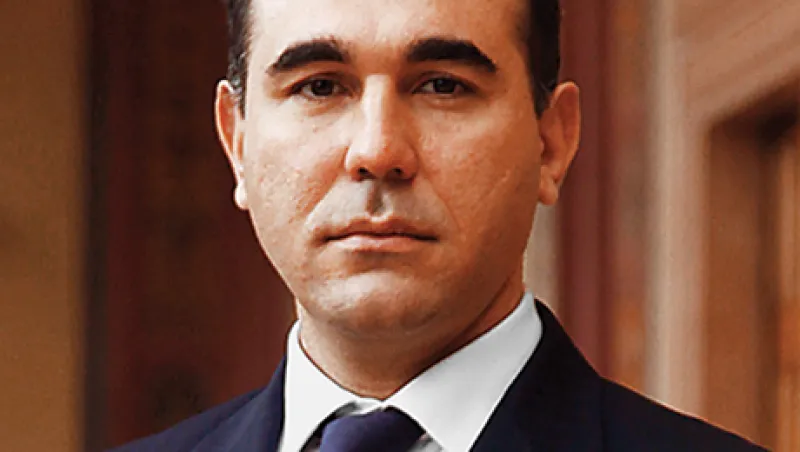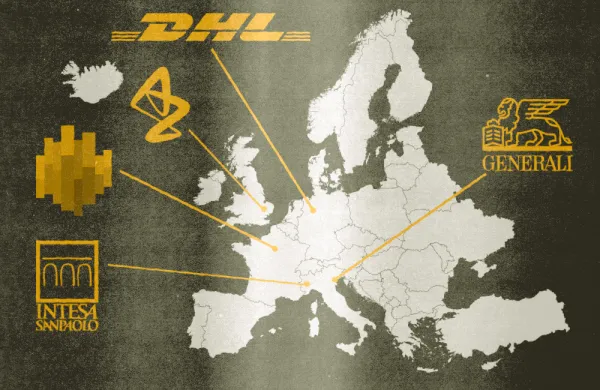The headquarters of Banca Monte dei Paschi di Siena (MPS) contains hidden treasures dating from the Middle Ages, appropriate enough for a bank founded in 1472. The offices are housed in the Palazzo Salimbeni, a 14th-century neo-Gothic gem in the heart of Siena’s medieval city center, as well as two adjacent palazzi. As visitors mount a rickety wooden staircase in the ancient stone towers, they stumble upon a concealed alcove containing a Renaissance masterpiece painting.
But one of the more recent secrets concealed in the palazzo is still making waves in Italian financial circles, long after it was discovered in October 2012. In a dust-covered safe belonging to former bank general manager Antonio Vigni, officials found documents from former MPS president Giuseppe Mussari to Japan’s Nomura Holdings in which he discussed the existence of an unprofitable derivatives trade — code-named Alexandria — intended to hedge Italian government bond holdings, which the bank had never disclosed to its shareholders, auditors or regulators.
Mussari, who got the job on the strength of his political connections in Siena, appears to have had no financial experience before taking the reins at MPS in 2006. When he was forced out, in April 2012, he confessed that “banking is not my profession but a job. I am going back to being a lawyer.”
Probably his worst move as CEO was the ill-fated acquisition of Banca Antonveneta in 2007, part of the fallout from the €71 billion (then worth $100 billion) takeover of ABN AMRO Bank by a consortium led by Royal Bank of Scotland, the largest and arguably most disastrous banking deal ever. After winning ABN AMRO, RBS and its partners — Fortis of the Netherlands and Spain’s Banco Santander — immediately broke up the Dutch bank, with the Spaniards paying €6.6 billion for Antonveneta, a solid second-tier player based in the prosperous northeastern city of Padua. Santander promptly turned around and auctioned off the bank, which MPS snapped up for a stunning €9 billion. Santander walked away with a massive profit; MPS, like RBS and Fortis, found itself badly overstretched.
When Lehman Brothers Holdings collapsed the following year, the resulting plunge in Italian equities caused a cascade of problems at MPS. Years earlier, in 2002, the bank had entered into a swap with Deutsche Bank to raise cash from its stake in Sanpaolo IMI, a bank that’s now part of Intesa Sanpaolo, while retaining exposure to its share price. When Italian equities plunged in 2008, MPS suddenly faced a €360 million loss on those shares. The bank never disclosed the loss; instead, MPS sought to offset it by entering into another derivatives deal with Deutsche to place a big bet on Italian government bonds. When the euro area debt crisis flared in 2011, Italian bond prices plunged and MPS’s losses compounded. Rolling the dice one more time in a bid to escape the losses, the bank entered into the Alexandria derivatives deal with Nomura. By the time MPS finally sorted out the chain of trades, it had lost €740 million.
Mussari was ousted at the behest of the Bank of Italy, which regulates Italian banks, and MPS survived thanks to a series of capital injections from the government, eventually totaling €4 billion, that bore a crushing interest rate of more than 9 percent.
To pay back this loan and avoid nationalization, new CEO Fabrizio Viola decided to raise the bank’s rights issue earlier this year from €3 billion to €5 billion. The increase also reflected pressure from the asset quality review and stress test that the European Central Bank is conducting at major European banks. MPS wanted to remain in the top quartile of banks by capital to be sure of passing the regulatory test, says Bernardo Mingrone, the bank’s chief financial officer.
“I think with the rights issue we’ve put things right in terms of reestablishing the right capital position for a bank this size, with this kind of risk profile and ambitions,” Mingrone says in an interview at the bank’s headquarters. “In the words of the manager of the Rome football team, ‘we have put the church back in the center of the village.’”
It’s a smaller village as far as MPS is concerned, though. Describing the bank’s turnaround strategy, Mingrone says, “We are shrinking our securities portfolio, we’re shrinking the overall size of the balance sheet and we’re shrinking the size of our footprint because we believe very strongly that banks in Italy are overbranched and overstaffed.”
MPS has closed 450 branch offices and plans to shutter another 100 more in the next two years; it is cutting its staff by more than a quarter, to 23,000 from 31,500. The bank is also getting out of consumer finance, which is a relatively high-cost business.
The bank is trimming its balance sheet too. In June it sold a €500 million package of nonperforming loans to Fortress Investment Group, the New York private equity firm. “I’m convinced that Italian banks aren’t the best managers of these turnaround processes because of the commercial relationship [with the debtor] and the conflict of interest you have and the fact that you might not be as tough as you should be,” Mingrone says. If the bank emerges from the asset quality review in good shape, he adds, it will do more such disposals.
When Mingrone is asked about market rumors that MPS is a possible merger candidate with a larger bank, he nods. “What’s wrong with that?” asks the banker, who has an Australian mother and speaks slangy, unaccented English. “If people want to buy MPS because they see value there, that means we have done our job well.” He even says he would be partial to a takeover bid from BNP Paribas, owner of Italy’s BNL, because he admires the French bank’s management.
But Mingrone acknowledges that about a quarter of the bank’s revenues come from Tuscany’s small and midsize enterprises, which produce such items as leather goods and gold jewelry. Much of the bank’s fortunes depend on a turnaround in the outlook for those firms, which now seems rather distant. “These are the hardest-hit sectors of the economy,” he says.
See also "Italy's Banks Bolster Capital, Hope for an Economic Rebound."






